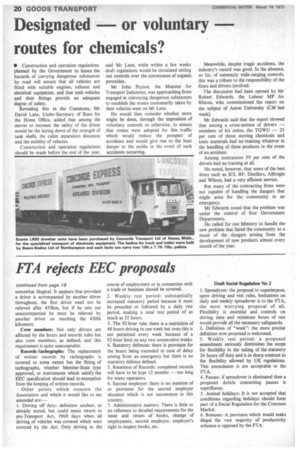Designated or voluntary routes for chemicals?
Page 22

If you've noticed an error in this article please click here to report it so we can fix it.
• Construction and operation regulations planned by the Government to lessen the hazards of carrying dangerous substances by road will ensure that all vehicles are fitted with suitable engines, exhaust and electrical equipment, and that tank vehicles and their fittings provide an adequate degree of safety.
Revealing this in the Commons, Mr David Lane, Under-Secretary of State for the Home Office, added that among the moves to increase the safety of the driver would be the laying down of the strength of tank shells, the cabin separation distances and the stability of vehicles.
Construction and operation regulations should be made before the end of the year, said Mr Lane, while within a few weeks draft regulations would be circulated setting out controls over the conveyance of organic peroxides.
Mr John Peyton, the Minister for Transport Industries, was approaching firms engaged in conveying dangerous substances to establish the routes customarily taken by their vehicles went on Mr Lane.
He would then consider whether more might be done, through the imposition of voluntary controls or otherwise, to ensure that routes were adopted for this traffic which would reduce the prospect of accidents and would give rise to the least danger to the public in the event of such accidents occurring. Meanwhile, despite tragic accidents, the industry's record was good. In the absence, so far, of extremely wide-ranging controls, this was a tribute to the responsibility of the firms and drivers involved.
The discussion had been opened by Mr Robert Edwards, the Labour MP for Bilston, who commissioned the report on the subject of Aston University (CM last week).
Mr Edwards said that the report showed that among a cross-section of drivers — members of his union, the TGWU — 25 per cent of those moving chemicals and toxic materials had no training whatever in the handling of these products in the event of an accident.
Among contractors 39 per cent of the drivers had no training at all.
He noted, however, that some of the best firms such as ICI, BP, Distillers, Allbright and Wilson, had a very efficient service.
But many of the contracting firms were not capable of handling the dangers that might arise for the community in an emergency.
Mr Edwards noted that the problem was under the control of four Government Departments.
He called for one Ministry to handle the new problem that faced the community as a result of the dangers arising from the development of new products almost every month of the year.
























































































































